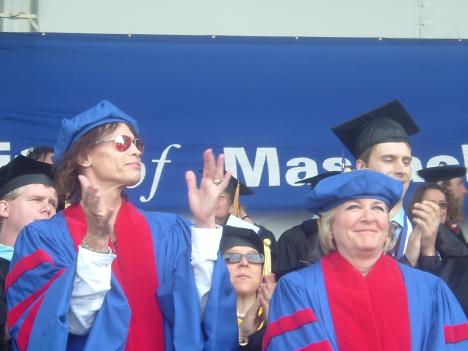Editorial:State Budget Leaves Little for Public Higher Ed
April 21, 2005
BY MASS MEDIA EDITORIAL BOARD
Despite the fact that the House Ways and Means Committee’s $23.6 billion state budget plan exceeds Governor Mitt Romney’s $23.2 billion proposal for the 2006 fiscal year, it still fails to bring solace to many residing in the state of Massachusetts.
Though education funding increased from last year, the proposal left a bitter taste among those within the state public school system who state that the increases are not enough.
The House proposal, like Romney’s, raised the current $3.18 billion state spending by approximately 2.5% to $3.26 billion for 2006.
Since the 2002-2004 state fiscal crisis, school districts have faced dismal times. Many schools lack books, adequate technology, equipment, and teachers. Since then, many schools have made due by increasing classroom sizes. The current budget is 23% lower than 2003.
Geoff Beckwith of the Massachusetts Municipal Association believes that the increase in budget is not enough to relieve schools seeking to rebuild after deep cuts in programs and personnel, according to the Boston Globe.
“This is going to be a very very tough year for public schools and higher education if funds are not increased. It barely keeps up with inflation, let alone restoring all the cuts,” said Catherine Boudreau, president of the Massachusetts Teachers Association to the Globe. And on the frontline of higher education, the UMass system is particularly under the spotlight.
Students at each of the five UMass campuses have felt the effects of the budget crisis with massive cuts in faculty/staff and departments. The campuses since have been seeking to rebuild their faculty ranks.
The UMass Boston campus faces its own set of crises that the 2.5% increase will fail to assist. In addition to rebuilding departments and the university’s lagging retention rates, since the 2002-2004 fiscal crisis the tuition rate at the Boston campus has nearly doubled (from a consistent $4222 between academic years 1999-2002 to $8024 this current academic year).
According to the Reaccredidation Self-Study Report February 2005, “Faculty and administrators are deeply concerned that recent budget cuts, particularly when combined with changes in federal financial aid policies, will eliminate access for many of our low-income students. With tuition and fees at 7.7 % of state median income…we remain affordable for many who do not have the means for private education, but we may be loosing students at the lower economic end.”
The most alarming part of the crisis is the campus infrastructure’s rapid deterioration. In stark contrast to the new $75 million state of the art Campus Center stands the parking garage that serves as the structural foundation of the entire campus. University officials estimate it will take at least $50 million and three years to renovate the parking garage. Officials estimate that unless this process begins within the next 10 years, the entire campus risks structural failure.
Realities like the one at UMass Boston reflect the fact that the state is short on money. However, since Romney took office, he urged the legislature to lower the state income tax from 5.95% to 5%. In 2000, voters approved a gradual lowering, but because of the fiscal crisis, that rate was frozen at 5.3% in 2002. Now that the state is gradually recovering, Romney is once again pushing to bring the rate down to the determined 5%.
But with Massachusetts public schools in crisis, it seems hardly appropriate to continue to cut the state income tax. “Massachusetts is affluent enough to afford the old rate of 5.95 percent instead of the current 5.3,” says the Boston Globe editorial on April 14.
Massachusetts stands as one of the nation’s leaders in learning and scholarship. Now take this fact into consideration: nationally, Massachusetts ranks 49th in state spending on public higher education.





















































